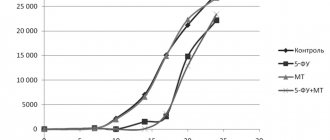Biochemical analysis: albumin
Maintaining optimal levels of this protein is extremely important for the functioning of the body as a whole. The volume of blood circulating in the body depends on this. In addition, the protein is responsible for regulating osmotic pressure. This indicator changes under the influence of many factors (for example, after eating salty foods). Therefore, its regulation is a very important process. Albumin is also responsible for the transport and storage of many biological compounds and amino acids. When examining your health status, the ALB level is one of the key indicators.
Albumin human
If allergic or anaphylactic reactions occur, the drug should be stopped immediately and appropriate treatment should be initiated. In case of shock, antishock treatment should be initiated in accordance with current standards of care.
When carrying out an infusion of the drug, it is necessary to ensure careful and regular monitoring of circulatory parameters, including blood pressure, heart rate, central venous pressure, pulmonary artery wedge pressure, diuresis, plasma electrolyte concentrations, hematocrit/hemoglobin.
When administering albumin solution, the concentration of sodium and potassium in the patient's blood plasma should be monitored and appropriate measures should be taken to restore or maintain the balance of these electrolytes. It should be taken into account that the sodium concentration in 5% and 20% solutions is the same.
If it is necessary to replace relatively large volumes, monitoring of blood coagulation parameters and hematocrit is required. Appropriate replacement of other blood components (clotting factors, electrolytes, platelets and red blood cells) should be ensured.
Administration of an albumin solution during dehydration is possible only after first ensuring sufficient fluid intake (orally, parenterally).
Since a 20% albumin solution can effectively increase colloid osmotic pressure, during its administration the patient’s condition should be monitored in order to timely detect circulatory overload and overhydration.
Albumin solutions should not be diluted with water for injection, since administering such a solution to a patient may cause hemolysis of red blood cells.
Standard measures to prevent infections caused by the use of medicinal products derived from human blood or plasma include screening donors, testing individual portions and pools of plasma for specific markers of infection, and incorporating effective virus inactivation/elimination measures into the manufacturing process. However, when using medicinal products produced from human blood or plasma, the possibility of transmission of infectious agents cannot be completely excluded. This also applies to unknown or newly identified viruses and other pathogens.
There have been no reports of transmission of viruses from albumin solutions produced by conventional methods in accordance with the specifications of the European Pharmacopoeia.
Whenever a drug is administered to a patient, it is recommended that the name of the drug and the batch number be recorded in the patient's medical history or medical record so that the relationship of the patient's condition with the administration of the drug in a particular series can be traced.
Who needs to get tested
Blood test for albumin
used in conjunction with data from other studies in the diagnosis of many diseases. Most often, the analysis is prescribed for suspected pathologies of the kidneys and liver. Its results are also used to assess the health status of patients with cancer diagnoses, major injuries or burns. The test is prescribed independently or in combination with other tests. The composition of the examination required in a particular case is determined by the doctor based on the patient’s complaints, examination results, and medical history.
Complexes with this research
Advanced anti-aging diagnostics in postmenopause Advanced control of age-related changes during postmenopause 29,230 ₽ Composition
Anti-aging diagnostics in postmenopause Control of age-related changes during postmenopause 12,630 ₽ Composition
Vegetarians and vegans Metabolic control while avoiding animal products 5,820 ₽ Ingredients
IN OTHER COMPLEXES
- For those at risk of COVID-19 RUB 4,510
- Biochemistry of blood. 19 indicators 6,280 ₽
- Biochemistry of blood. 13 indicators 3,490 ₽
- Male anti-aging diagnostics RUB 13,300
- Women's anti-aging diagnostics RUB 12,070
Interpretation of results
Albumin is synthesized in the liver. Normally, approximately 15 grams of protein are produced per day. It remains in the body and performs its functions for several weeks. The main purpose of this test is to assess the protein-synthetic function of the liver. An increase in indicators indicates dehydration of the body. The causes of dehydration can be different (for example, serious burns). Also, a high level of ALB may indicate the presence of infection and a number of other diseases. For their accurate diagnosis, additional examination is mandatory.
A lack of protein in most cases indicates kidney pathologies. It can also be observed in the presence of an inflammatory process. A decrease in indicators during pregnancy is normal. Reference values depend on the patient's age. For adults, the norm ranges from 35-52 g/l. Based on the test results, one can judge the severity of a number of diseases.
Total protein
To assess the total amount of albumin and globulins, total protein is determined. For newborns, its norm is 46–68 g/l, for babies under one year of age – from 48 to 76, for older ones – no higher than 80. The norm for adults ranges from 65 to 85 g/l. This test is usually performed by examining serum. An absolute increase in concentration is rare and is a sign of myeloma, polyarthritis, cirrhosis or hepatitis.
A biochemical blood test shows that a relative increase in protein is observed with burns, vomiting, diarrhea, nephritis, and peritonitis. A decrease indicates starvation, diseases of the gastrointestinal tract, deterioration in the formation of proteins (including congenital disorders) or an increase in their breakdown. A physiological decrease in protein is recorded in women in the final trimester of pregnancy, with insufficient nutrition during breastfeeding.
conclusions
The amount of ALB is required to diagnose a number of diseases and select the optimal treatment tactics. It characterizes metabolism and overall health. In case of severe symptoms of kidney problems, this test is prescribed first. It can also be carried out as part of a comprehensive examination or after it, if deviations are identified and it is necessary to clarify their nature and cause. Interpretation of the results can only be carried out by a doctor; the test is not intended for self-diagnosis
. In some cases, deviations from the norm are possible in the absence of diseases.
Low albumin levels may predict poor outcome in patients with COVID-19
The COVID-19 pandemic has claimed more than four hundred thousand lives worldwide, and Spain is one of the worst affected countries. At the time of writing this article, there have already been more than 25,000 deaths due to COVID-19 in Spain. The article's authors explain that despite this, little information is available regarding the underlying characteristics and risk factors for patients at risk of hospitalization due to infection. This study included 48 patients admitted with COVID-19.
The scientists explained that it was necessary to identify factors on the basis of which an unfavorable prognosis for a particular patient can be made. The team said many studies show that there is suppression of the immune system during infection. This may be a key factor that leads to the progression of a mild infection to a more severe and ultimately life-threatening condition in the patient. Because inflammation plays a key role, factors that influence inflammation may be important in the progression of the disease.
Albumin is a protein produced in the liver and found in the blood. People with low albumin levels may have liver and kidney problems. Low albumin levels are also seen in patients with malnutrition, severe infection, thyroid disease, and inflammatory bowel disease.
The study involved 52 patients hospitalized due to complications of COVID-19 until March 31, 2020. Of these patients, 48 had severe acute respiratory syndrome due to SARS-CoV-2. They all tested positive for the virus. Data were collected between 15 and 31 March 2021. The aim of the study was to describe the clinical characteristics and epidemiological features of severely and critically ill patients.
Among the 48 patients, 21 were admitted to intensive care and 27 were not. All of these patients were residents of the island of Mallorca in Spain. Their average age was 66 years, and 67% were men. The age distribution was similar among patients. The following conclusions were made:
before hospitalization included fever (all patients), cough (85% of patients), difficulty breathing (76% of patients), diarrhea (42% of patients, and weakness (21%)).
The main reason for hospitalization among patients was low blood oxygen levels (SpO2 below 90%) and the presence of pneumonia in both lungs (94% of cases).
Among all patients, 70% had high blood pressure, 62% had high cholesterol and 30% had heart disease.
Those admitted to the intensive care unit (ICU) had more difficulty breathing.
Acute respiratory syndrome (ARDS) developed in all patients admitted to the ICU.
All 48 participants required oxygen therapy.
Laboratory tests showed that intensive care unit patients had low lymphocyte counts and low blood albumin levels.
Among patients admitted to the ICU, there was a significant increase in inflammatory markers such as lactate dehydrogenase (LDH), C-reactive protein (CRP), and procalcitonin compared with those not admitted to the ICU.
Lower blood albumin levels were significantly associated with worse outcome and longer hospital stay. The risk of death was also higher among people with lower blood albumin levels.
In red blood cell studies, mean corpuscular volume of red blood cells was lower among patients who died from infection and its complications.
At the end of the study (April 28, 2021), the mortality rate was 21%: 8 patients in intensive care units and 2 in other units died from infection.
At the end of the study, all non-ICU patients were discharged from the hospital. While among the intensive care unit patients, one third remained in hospital at the end of the study (5 in the intensive care unit and 2 transferred to general wards).
Conclusions and implications
People with influenza A (H1N1) and human immunodeficiency virus infection (HIV) also had a poorer outcome if they had lower albumin levels, the paper's authors reported. Among patients with influenza, the need for respiratory support increased with low albumin levels, and among patients with HIV, low albumin levels meant a greater risk of inflammation and atherosclerosis.
This was a relatively small study that showed that certain laboratory parameters may be important in characterizing the severity of illness in patients with COVID-19. “Lower albumin levels were associated with worse outcomes in patients with COVID-19. Albumin may be important because of its association with disease severity and mortality in patients infected with SARS-CoV-2."
The scientists added: “This small case series provides the first steps towards a comprehensive clinical characterization of severe and critical adult patients with COVID-19 in Spain.”
Expert opinion
: Of course, based on such a small study, no final conclusions can be drawn. But now any additional information can adjust the forecasts for patients with COVID-19. Moreover, determination of albumin level is included in the list of standard laboratory tests.

